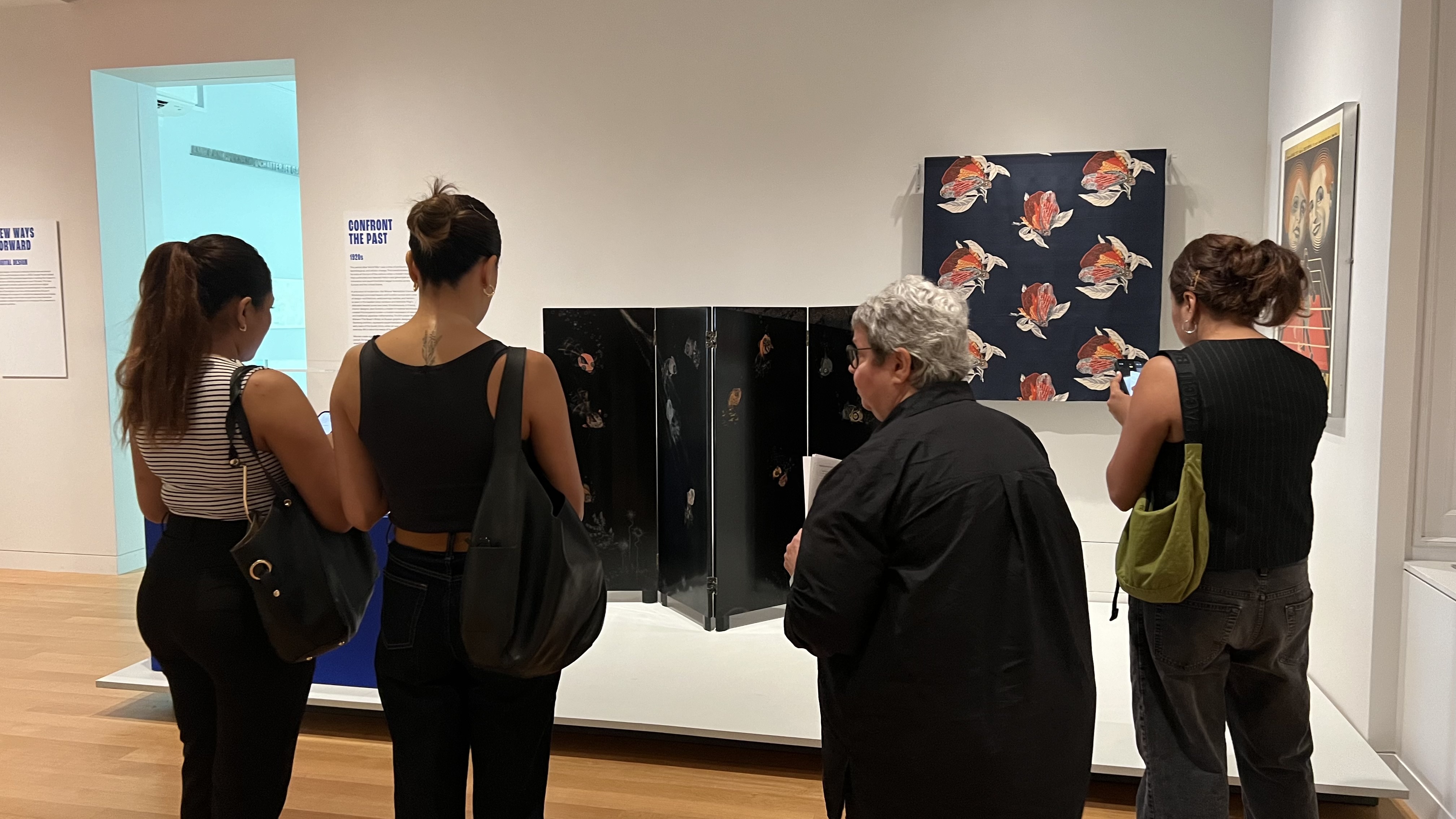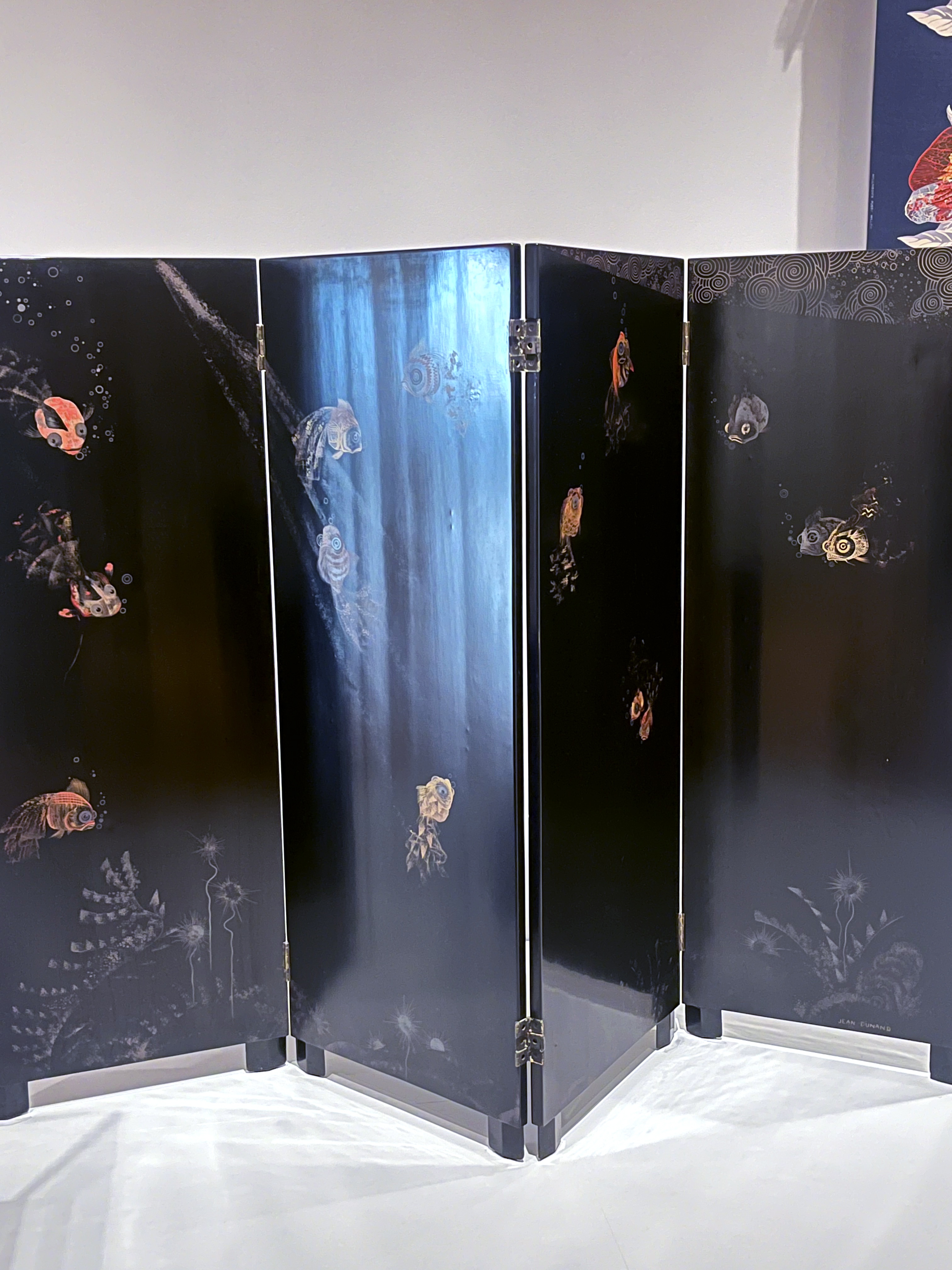-
Summer Project with Interns
This internship took place in Chelsea, NYC and offered a unique opportunity to learn Kogei (traditional Japanese art and crafts) and study Japanese art and culture with Museum Curators. During the eight-week program, three interns from University of California, Berkeley, Nathaly Garcia, Emily Quintero, and Luce Lopez, visited Japan Society, Cooper Hewitt Smithsonian Design Museum and The Metropolitan Museum of Art. These Museums have given Nathaly, Emily, and Luce their insight into where Kogei stands in the international art world and raised their interest to come up their statements about how they understand the intersection of Kogei with Western art and design. -

-
Visit to Cooper Hewitt Design Museum

-
-
-
The Cooper Hewitt Smithsonian Design Museum
By Nathaly Garcia
The Cooper Hewitt Smithsonian Design Museum, located in New York City, is one of the only museums in the United States dedicated exclusively to historical and contemporary design. The museum gets its name from its founders, Sarah and Eleanor Hewitt, and Cooper Union. Sarah and Eleanor Hewitt are granddaughters of industrialist Peter Cooper, the Hewitt sisters were passionate about design and arts education. The Cooper Union for Advancement of Science and Art was founded by Peter Cooper in 1859. Cooper Union is dedicated to providing education in engineering, architecture, and the fine arts. The museum has been housed at the Carnegie Mansion since 1976. Since then it has evolved and now unveils the power of industrial design, sustainability, digital design, etc.
Cooper Hewitt’s exhibition titled, Acquired!ShapingtheNationalDesign Collection, revolves around the question: What does it mean to be a design museum today? The institution explores the answer by dividing its exhibition into three pieces: “Confront the Past”, “Embrace the Past”, and “New Ways Forward”. The exhibition features more than 150 works from the museum's collection of over 215,00 objects from the past 30 centuries from all over the globe. Some of those pieces include a Model of the Covid-19 Coronavirus, 2020 Designed by Alissa Eckert & Dan Higgins, a Rainbow Sprinkle Drum Stool, 2017 designed & made by Fernando Mastrangelo, and a Sculptura Telephone from the Design Line Series Circa 1974, designed by Donald M. Genaro. Acquired!ShapingtheNationalDesignCollection showcases what design meant in the past, and the way it has been embraced and pushed forward.
-
-
“Confront The Past” and a lacquer panel
by Jean DunandBy Luce Lopez
Jean Dunand is a remarkable figure in the art world, particularly known for his contributions during the Art Deco period. His work, which seamlessly blends Eastern and Western motifs and techniques, stands as a testament to the rich cross-cultural exchanges of the early 20th century. This essay delves into how Dunand's exposure to diverse influences shaped his artistry, particularly focusing on his lacquered goldfish-patterned screens, and explores his journey through various art forms.
In the 1920s, following the upheaval of World War I, society underwent significant changes. Technological advancements began to influence people's perspectives, leading to a departure from traditional styles in favor of modernist approaches. Designers started to explore natural forms while emphasizing color and motifs, particularly in textiles and personal accessories. During this period, women played a crucial role in the sciences and textile industries, contributing their unique perspectives to the design landscape. This shift towards modernism marked a significant departure from the more ornamental and decorative styles that preceded it, reflecting a new way of seeing and interacting with the world.
-

-
Dunand's lacquered goldfish-patterned screens are a perfect illustration of his ability to merge Eastern and Western influences. The naturalistic depiction of koi, an iconic Japanese fish, and the use of traditional lacquer techniques represent the Eastern influence. Conversely, Dunand's enhancement of the fish with abstract linear patterns in its scales reflects a European sensibility. This combination of styles resulted in unique pieces that resonated with the Art Deco movement's ethos.
By 1905, Dunand had expanded his repertoire to include copper and brass, embellishing them with enamels and mother of pearl. His work began to incorporate geometric styles, aligning with the burgeoning Art Deco visual vocabulary. This phase marked a significant transition in Dunand's career, as he moved towards a more modernist approach while still retaining the intricate detailing of his earlier metalwork. Dunand was not just an artist but also an innovator. He experimented with new colors and techniques in lacquer, contributing to the evolution of the craft. His workshops employed many Asian artisans, ensuring the authenticity of the techniques while fostering a collaborative environment. Each face of Dunand's screens required up to 20 layers of lacquer, showcasing his commitment to meticulous craftsmanship.
Dunand's fascination with lacquer began in 1912 when he sought to learn this challenging and detailed process from a master Japanese lacquerer, Seizo Sugawara, who had decided to stay in Paris to teach the technique. Lacquering involves using resins from two trees found in Asia, producing a high shine superior to that of shellac or varnish. The process is notoriously difficult and dangerous due to the noxious fumes emitted by the lacquer. Despite these challenges, Dunand embraced lacquer work with great enthusiasm, referring to his efforts as "labors of pure patience."
One of Dunand's signature motifs, the koi, first appeared in his work in 1921. His pieces are characterized by bright metallic colors, symmetry, and representations of flora and fauna, all of which are hallmarks of his Art Deco style. Dunand's ability to filter traditional Japanese techniques through his own artistic sensibilities resulted in works that were both innovative and deeply respectful of their origins.
Jean Dunand's work during the Art Deco period exemplifies the powerful synergy between Eastern and Western art forms. His dedication to mastering and innovating upon traditional techniques, coupled with his ability to blend diverse influences, has left a lasting impact on the world of art. Dunand's lacquered goldfish-patterned screens and other works continue to be celebrated for their intricate beauty and cultural significance, embodying the rich, cross-cultural dialogue that defines the best of artistic expression. As Dunand's work illustrates, the evolution of design and its role in society is a dynamic process, continuously enriched by cultural exchanges and innovations.

